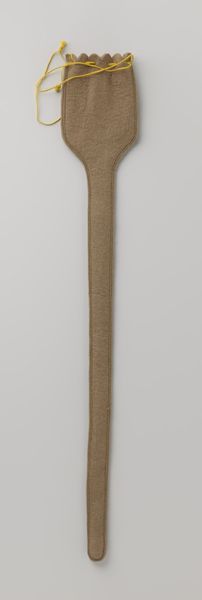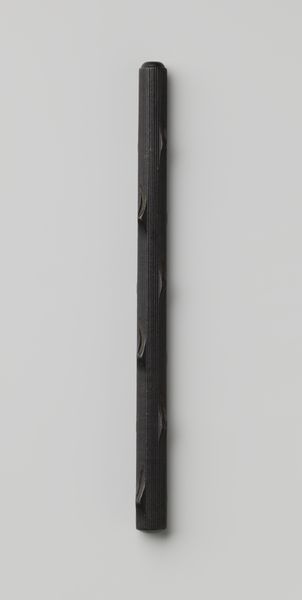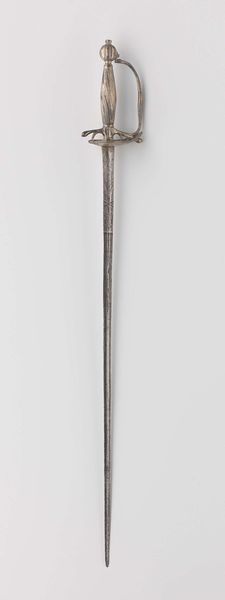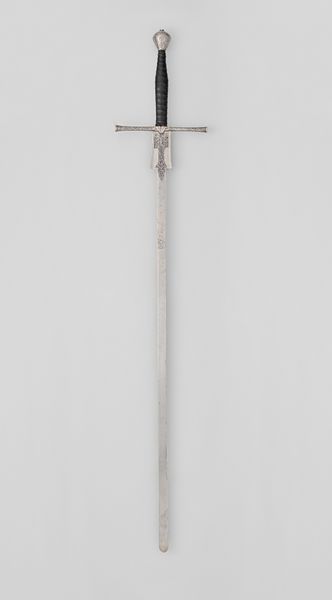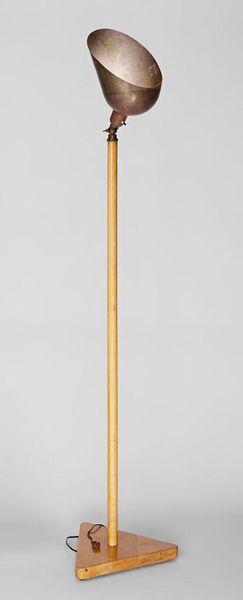
painting, oil-paint
#
abstract-expressionism
#
painting
#
oil-paint
#
colour-field-painting
#
form
#
abstraction
#
line
#
monochrome
Dimensions: 243 x 4.1 cm
Copyright: Barnett Newman,Fair Use
Curator: Confronting us now is Barnett Newman's oil painting, "The Wild," completed in 1950. It's deceptively simple at first glance, wouldn’t you agree? Editor: Stark. Almost brutally so. A single, slender, reddish-brown line dominating an off-white field. It feels incredibly lonely, like a solitary flame. Curator: Newman, aligned with the Abstract Expressionists and Color Field painters, aimed to evoke a sublime experience, cutting through what he viewed as the stagnant artistic landscape after World War II. This work very much reflects that socio-political environment of trying to find a new vocabulary. Editor: This "zip," as Newman termed it, is quite loaded symbolically, given its stark presence in what one would typically consider the “empty space” of a canvas. It stands like a primordial symbol, perhaps of division, but equally of connection. Consider its resemblance to boundary markers throughout human history, territorial delineations in some of our oldest cave paintings, like at Lascaux for instance. Curator: Precisely. It is very small – only about an inch and a half wide and a bit over 9 and a half inches high – but it looms so powerfully. In terms of art history, after the war, large paintings dominated New York galleries as a way of establishing a newly "American" kind of grand art. Newman subverts that notion with sheer simplicity of form, but retaining an immense scale of feeling. He insisted art be understood on its own terms, outside of traditional narrative or representational modes. Editor: And this seemingly minimalist expression contains a powerful, evocative spirit! Color theory alone casts brown-red as an ambivalent symbol. It can signify both base mortality, but also a life force, drawing strength from Earth. It suggests a fragile hope clinging to existence, especially within the austerity that defines the artwork itself. Curator: It speaks to the search for meaning during the period, as he distilled the visual experience to its very essence, echoing, in my opinion, the search for societal values at the time, given all of the turmoil surrounding the second World War. It also defies easy categorization, pushing the boundaries of the art world while remaining completely tied to its influences. Editor: A potent, concentrated charge, leaving so much open to individual experience and interpretation even to this day. I can stare at this work for a while. Curator: Me too. Its effect certainly stays with you long after you've moved on.
Comments
No comments
Be the first to comment and join the conversation on the ultimate creative platform.



